Howdy! I’m Clyde and I work on the Community Management team at Strava. I’m also a runner, and like most runners, I have been injured. I’ve always been excited to see more injury and recovery-related features on Strava so when Strava acquired Recover Athletics, I was thrilled I was able to be part of the Community Management team working with Recover.
So what's Recover?
If you don’t know, Recover is an app meant to help you reduce the risk of injury via personalized routines based on your activity data and an in-app soreness tracker. It provides athletes with warm-ups, drills, general strength routines, lots of prehab activities, and post-activity recovery routines.
As hard as I fight it, I continue to grow older and I’ve learned (the hard way) that I need to take better care of my body. I have had to manage a few injuries that require consistent care and this app has helped me keep those injuries at bay through a series of mobility and strength routines and post-activity reminders.
The Recover app is available on both iOS and Android and syncs directly to your Strava account. If you are a Strava subscriber, you get access to Recover’s premium routines for free but you are welcome to try either app without a subscription. This app has been really helpful for me and has taught me ways to stay mobile and strong.
Let's take a tour
Logging in: Accessing this is fairly simple, you can log in with your Strava account:
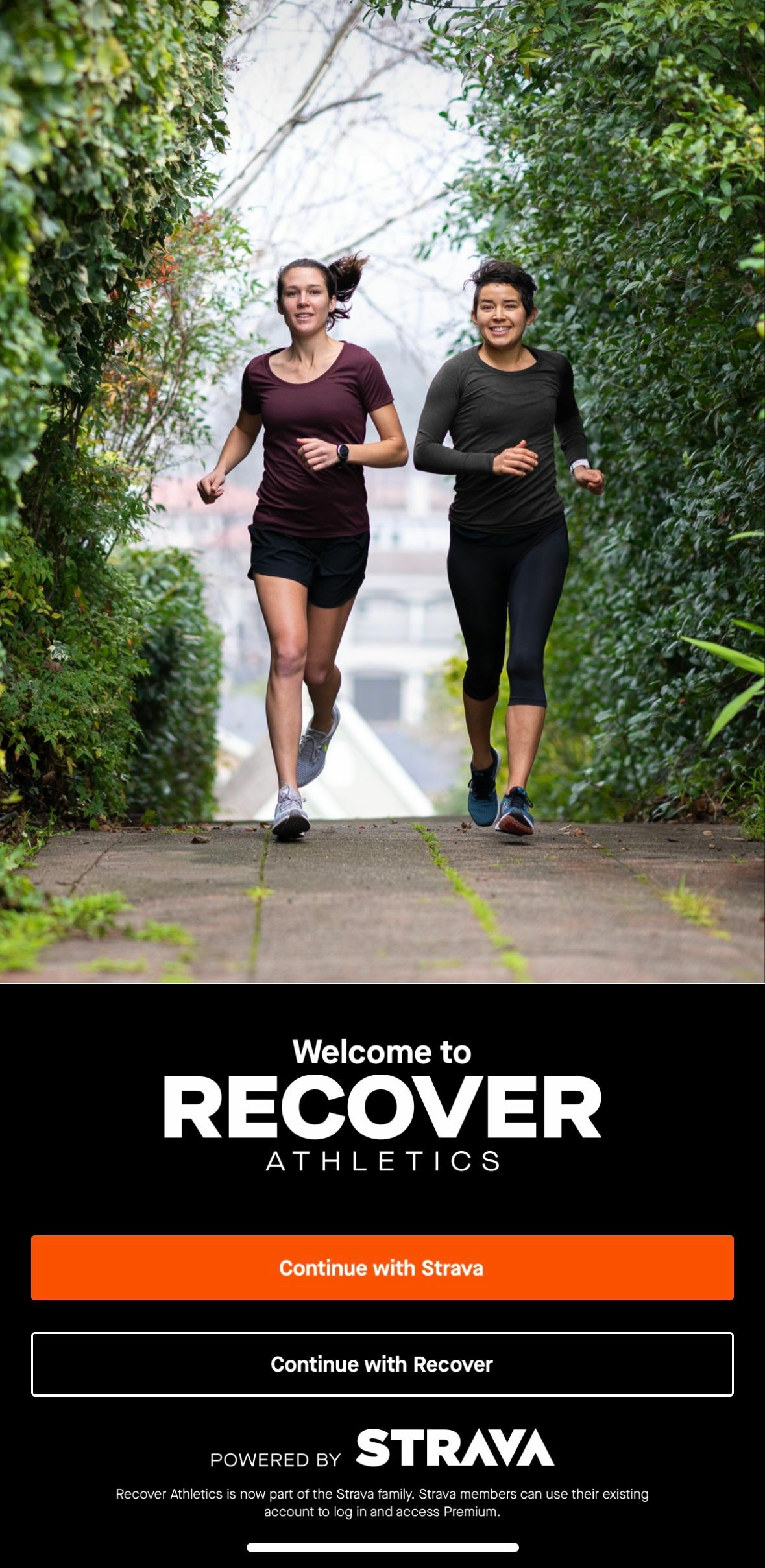
Where are you sore? Once you’re logged in, you can choose areas of the body that you’d like to track progress/soreness on:
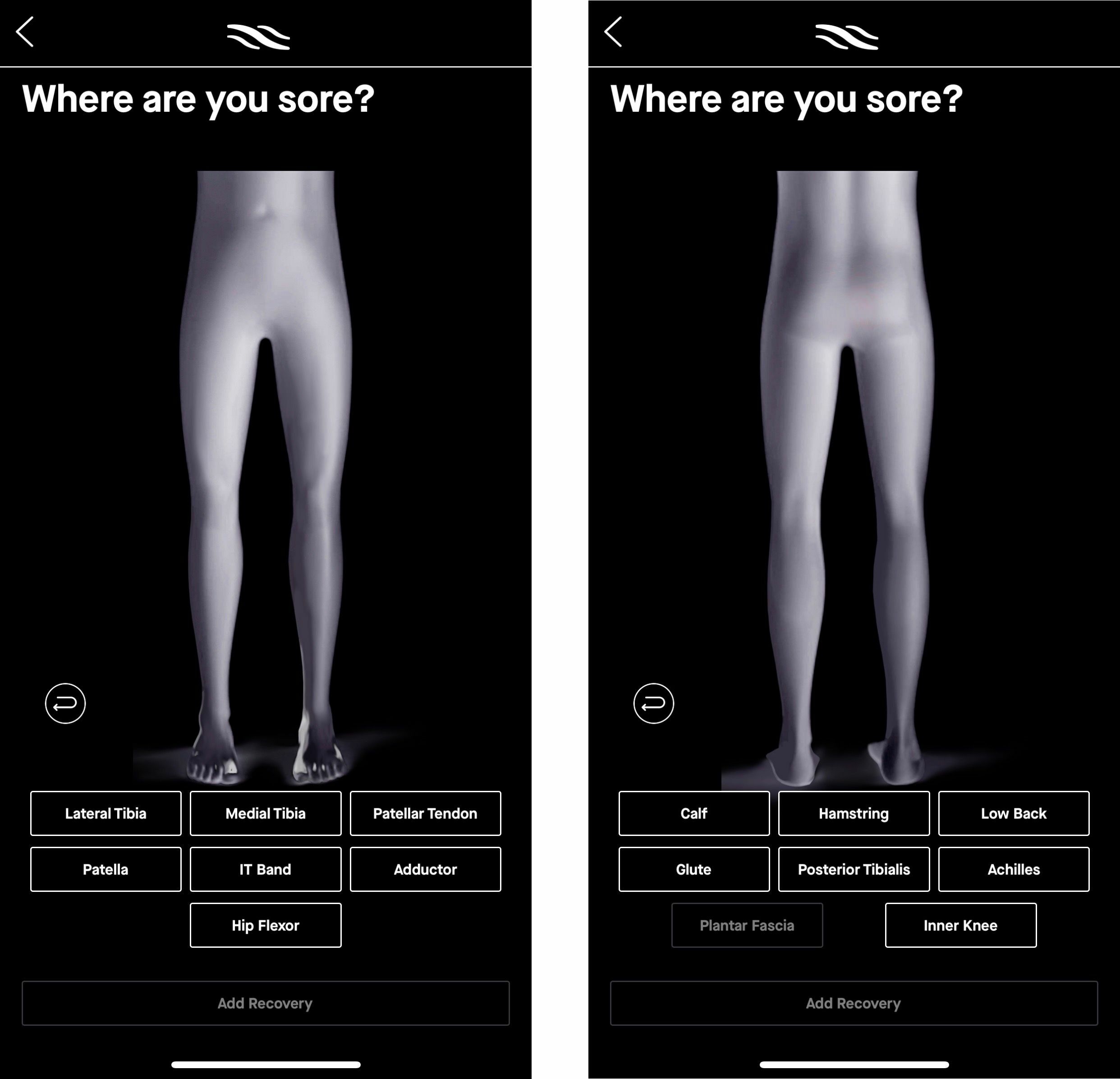
Routines: You can also choose routines to do from the Studio tab. Here is where you’ll see some familiar faces with their tried-and-true routines:
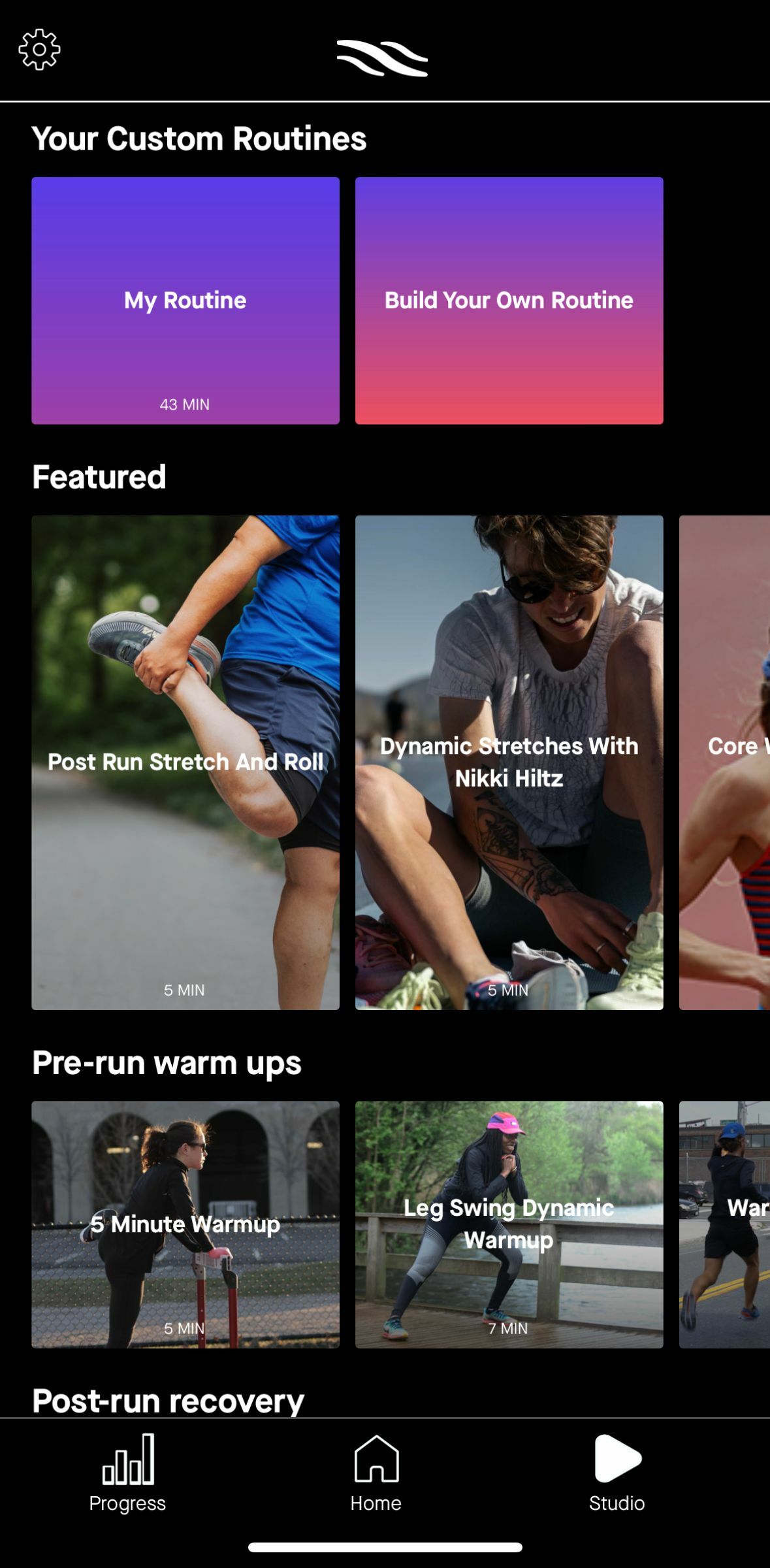
Routine Builder: You have the option to create your own routines combining multiple areas of the body based on the equipment you have available to you. I find this useful if I want to focus on a few areas at once or if I want to create a different routine without my normal equipment like when I’m traveling:
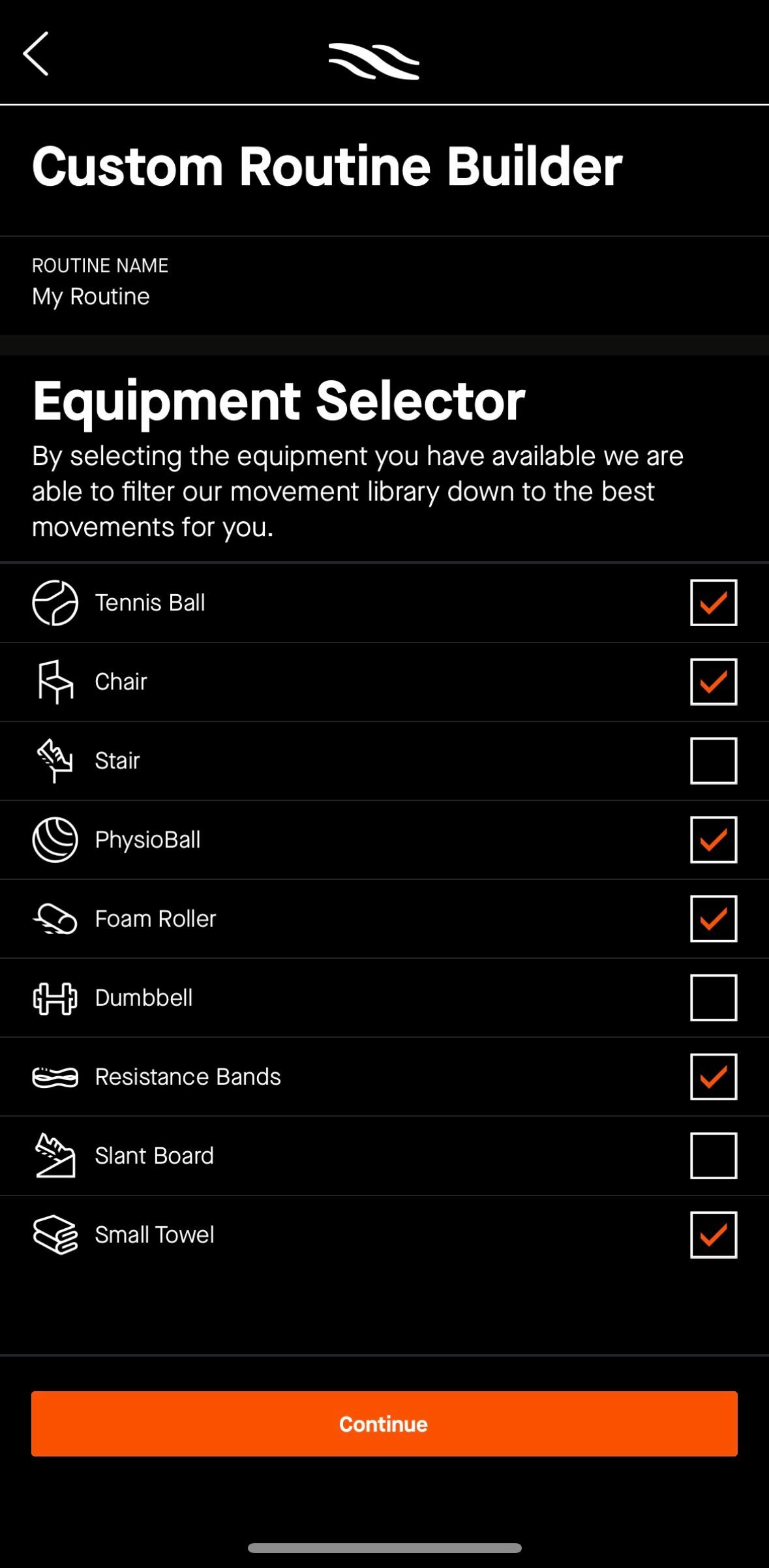
Reminders: You can be reminded to do these routines when you have a completed activity on Strava or even set up a daily reminder for yourself:
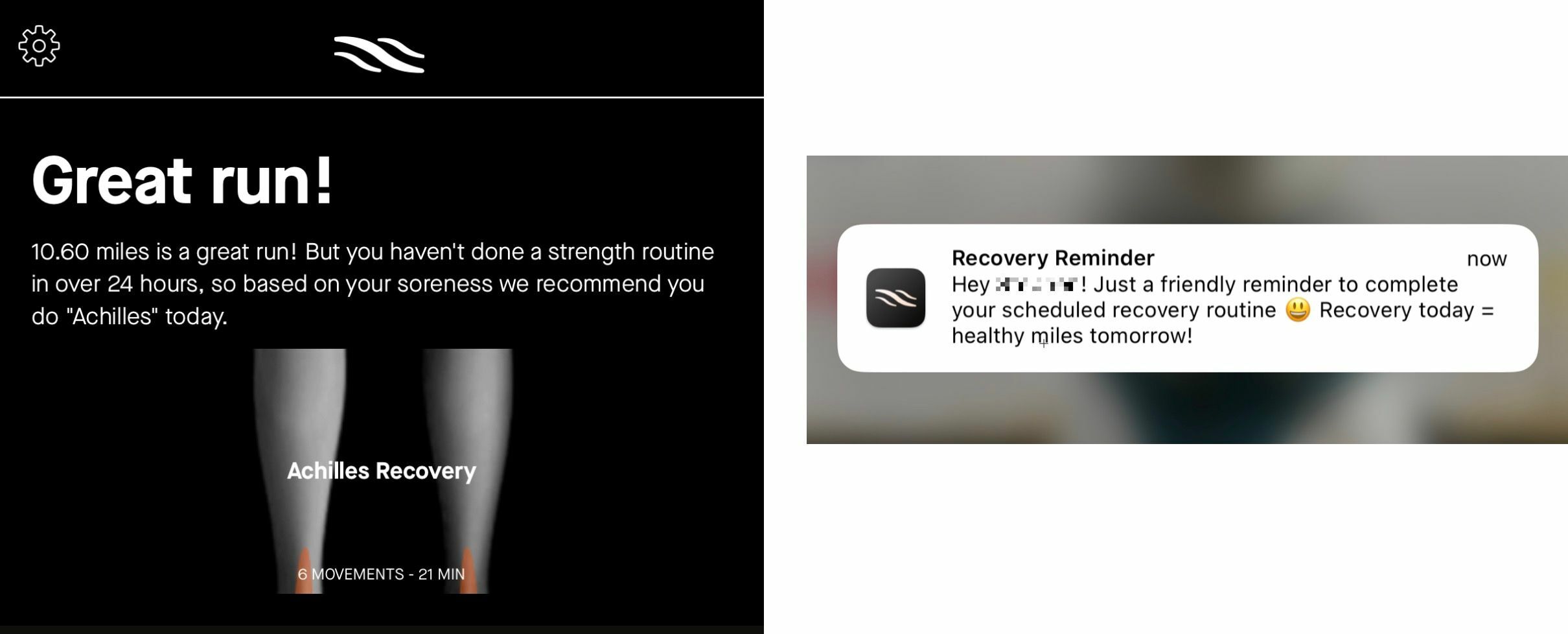
Frequently Asked Questions
Being on Strava’s Community Management team working with Recover, I’ve seen the majority of the questions we get from athletes. I thought I would share some of the most frequently asked questions with you:
- We have had many athletes asking about upper-body and cycling-specific routines. At first, this app was developed for runners but with all the requests we’ve received, our team has developed some cycling-specific and upper-body routines. These are coming top the app this month!
- Your prehab goals consist of strength and mobility routines. Most routines suggested will end up being strength routines so you may have to look for a mobility routine on the Studio tab to hit your goals. Some examples of mobility routines are: Leg Stretches with Nikki Hiltz, Pre-Race Mobility with Nikki Hiltz, Full Body Mobility with Hillary Allen, Post Run Stretch and Roll, Meb’s 5 Minute Loosen Up, etc, etc. You’ll know they are mobility routines based on the Activity Type found on the routine home page.
- Another question we see frequently is that the body map is missing something the athlete needs. While we may not have a recovery routine for every body part on our body map, we do have a blog that contains many additional resources for athletes: https://recoverathletics.com/common-running-injuries-and-how-to-fix-them/
- We also find some athletes reach out to Recover asking questions that aren’t app related, such as for medical or coaching advice. Trust me, you want neither of these from me. Unfortunately, our Community Management team doesn’t have any medical providers or coaches so we suggest athletes reach out to a professional for these types of questions. The Recover app is great for improving strength and keeping minor aches and pains minimal via the routines provided.
What is prehab?
Lastly, I’d like to leave you with one of the responses we send to athletes when they ask what prehab is and how often it should be done. This is such a good bit of information to have handy.
When to do prehab?
- Golden Rule: Keep easy days easy. Hard days hard.
- When you’re doing a slow easy recovery workout or taking the day off, that’s a great time to do mobility work.
- When you’ve done a harder workout (and you’re not too exhausted) that’s a perfect time to do strength training.
- Avoid doing lower body strength training 2 days in a row.
- The key is to give your body time to recover and repair itself, while also integrating the prehab training that is going to improve strength and make you resistant to injury.
What prehab routines to do?
- If you have soreness in a specific area or are rehabbing a diagnosed injury, stick with the corresponding recovery program (body part-specific routine) for 2-4 weeks until the pain has completely gone away. Do the program 2-3x per week.
- Start with 2 strength routines per week, and make sure not to do lower body strength 2 days in a row.
- You can always tell which routines are “strength” by looking at the routine overview screen and seeing whether the routine is majority strength exercises or majority mobility exercises.
- You can complement it with mobility routines every other day and core on the days you don’t do a strength program.
- If you don’t have a specific soreness problem, then do a strength or prehab workout 2-3x per week, mobility work 3-5x per week, and core 1x per week.
- Any of the strength & prehab routines from Studio are great additions to your routine.
That’s it for me! If you have any questions about Recover, please ask them in the comments below and I’ll do my best to find you some answers. Thanks for reading along and learning more about Recover. Be sure to download the app and give it a try!





